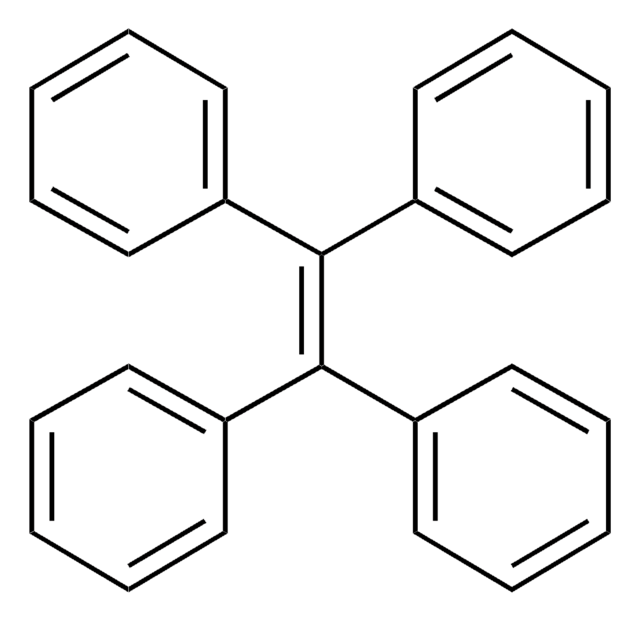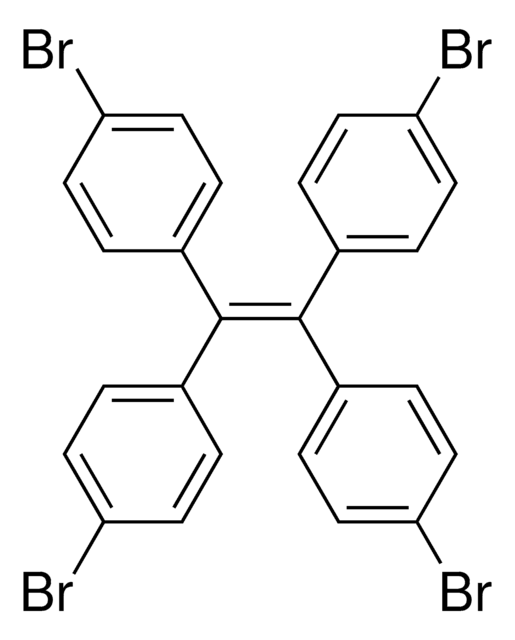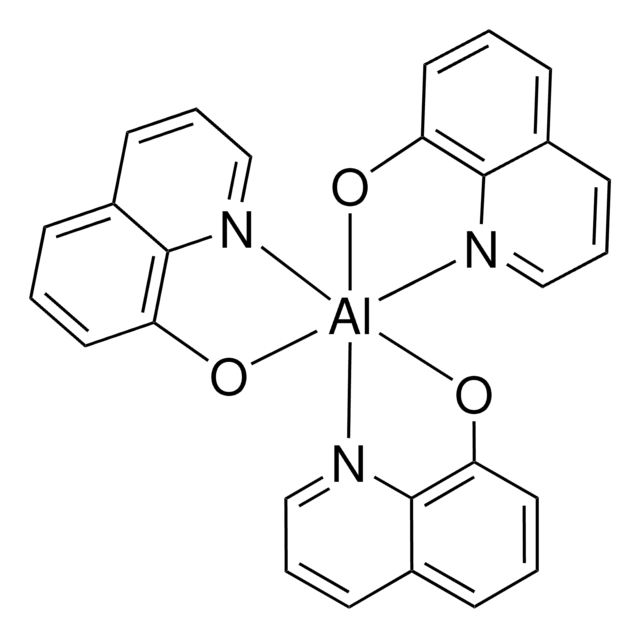797324
1,2-Bis(4-methoxyphenyl)-1,2-diphenylethene
98%
Synonym(s):
1,1′-(1,2-diphenyl-1,2-ethenediyl)bis[4-methoxybenzene], 1,2-Bis(p-methoxyphenyl)-1,2-diphenylethylene, TPE-OMe
About This Item
Recommended Products
Assay
98%
form
solid
SMILES string
COC(C=C1)=CC=C1/C(C2=CC=CC=C2)=C(C3=CC=CC=C3)/C4=CC=C(OC)C=C4
InChI
1S/C28H24O2/c1-29-25-17-13-23(14-18-25)27(21-9-5-3-6-10-21)28(22-11-7-4-8-12-22)24-15-19-26(30-2)20-16-24/h3-20H,1-2H3/b28-27+
InChI key
SJCRDTOTGDVNJD-BYYHNAKLSA-N
Application
Storage Class Code
11 - Combustible Solids
WGK
WGK 3
Flash Point(F)
Not applicable
Flash Point(C)
Not applicable
Choose from one of the most recent versions:
Certificates of Analysis (COA)
Sorry, we don't have COAs for this product available online at this time.
If you need assistance, please contact Customer Support.
Already Own This Product?
Find documentation for the products that you have recently purchased in the Document Library.
Articles
AIE Luminogens - Family of new materials with multifaceted functionalities. Find some representative applications of the AIEgens
Organic Light-emitting Diodes (OLEDs) are solid-state devices that transform electrical energy into light. OLEDs are considered the next generation technology for high-resolution flexible displays and solid state lighting, attracting intense scientific and industrial interest.
Our team of scientists has experience in all areas of research including Life Science, Material Science, Chemical Synthesis, Chromatography, Analytical and many others.
Contact Technical Service






![2,4-Bis[4-(N,N-diphenylamino)-2,6-dihydroxyphenyl]squaraine 98%](/deepweb/assets/sigmaaldrich/product/structures/303/054/d8b9c845-3623-4f5a-8a30-ab6731034171/640/d8b9c845-3623-4f5a-8a30-ab6731034171.png)
![B-[4-(1,2,2-Triphenylethenyl)phenyl]boronic acid](/deepweb/assets/sigmaaldrich/product/structures/121/044/864e0829-e1de-4170-aae4-16c2b3ce4111/640/864e0829-e1de-4170-aae4-16c2b3ce4111.png)
![4,4′,4′′-Tris[phenyl(m-tolyl)amino]triphenylamine 98.0%](/deepweb/assets/sigmaaldrich/product/structures/370/101/1022653f-ed3b-4991-a82c-269ad710b908/640/1022653f-ed3b-4991-a82c-269ad710b908.png)